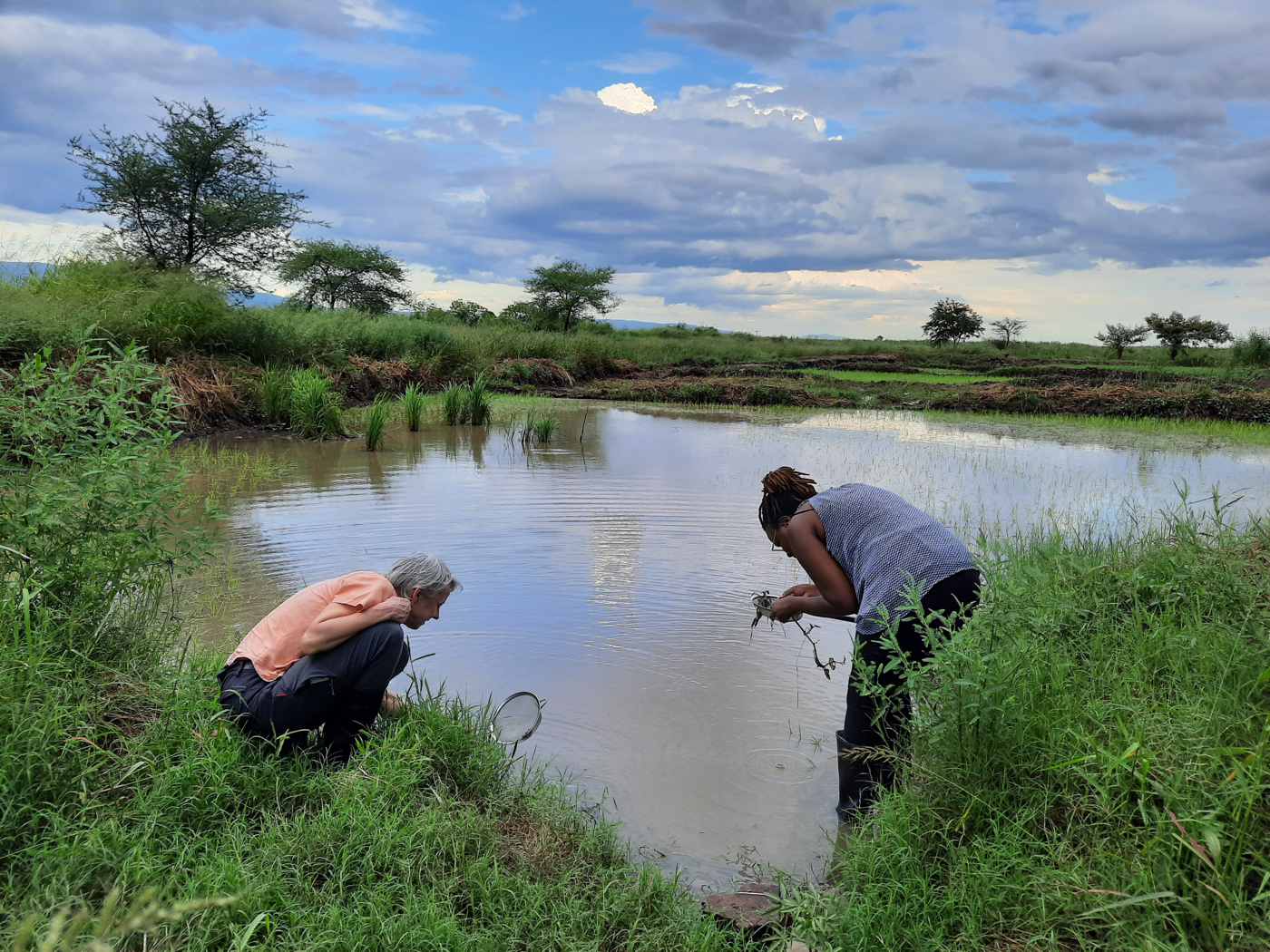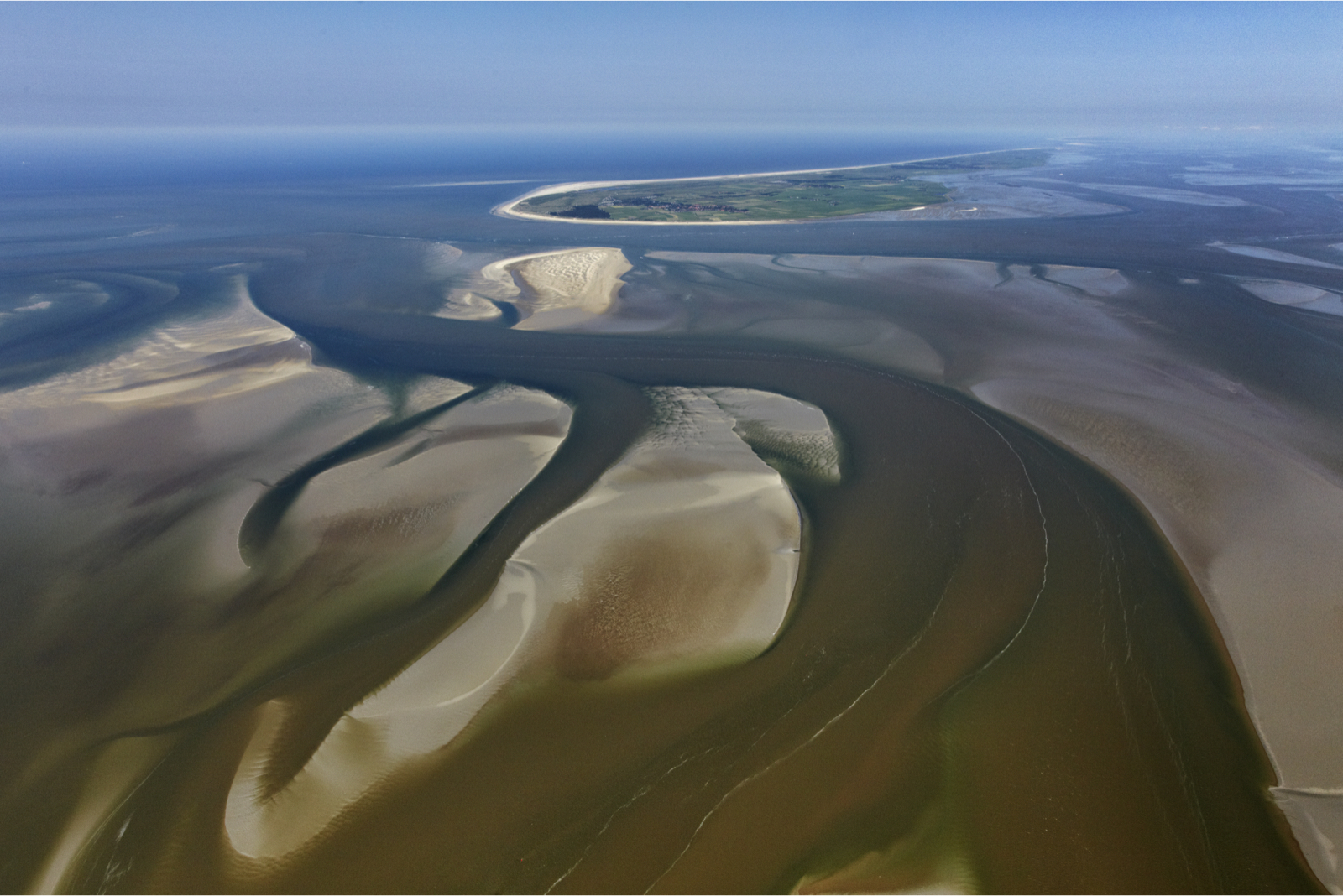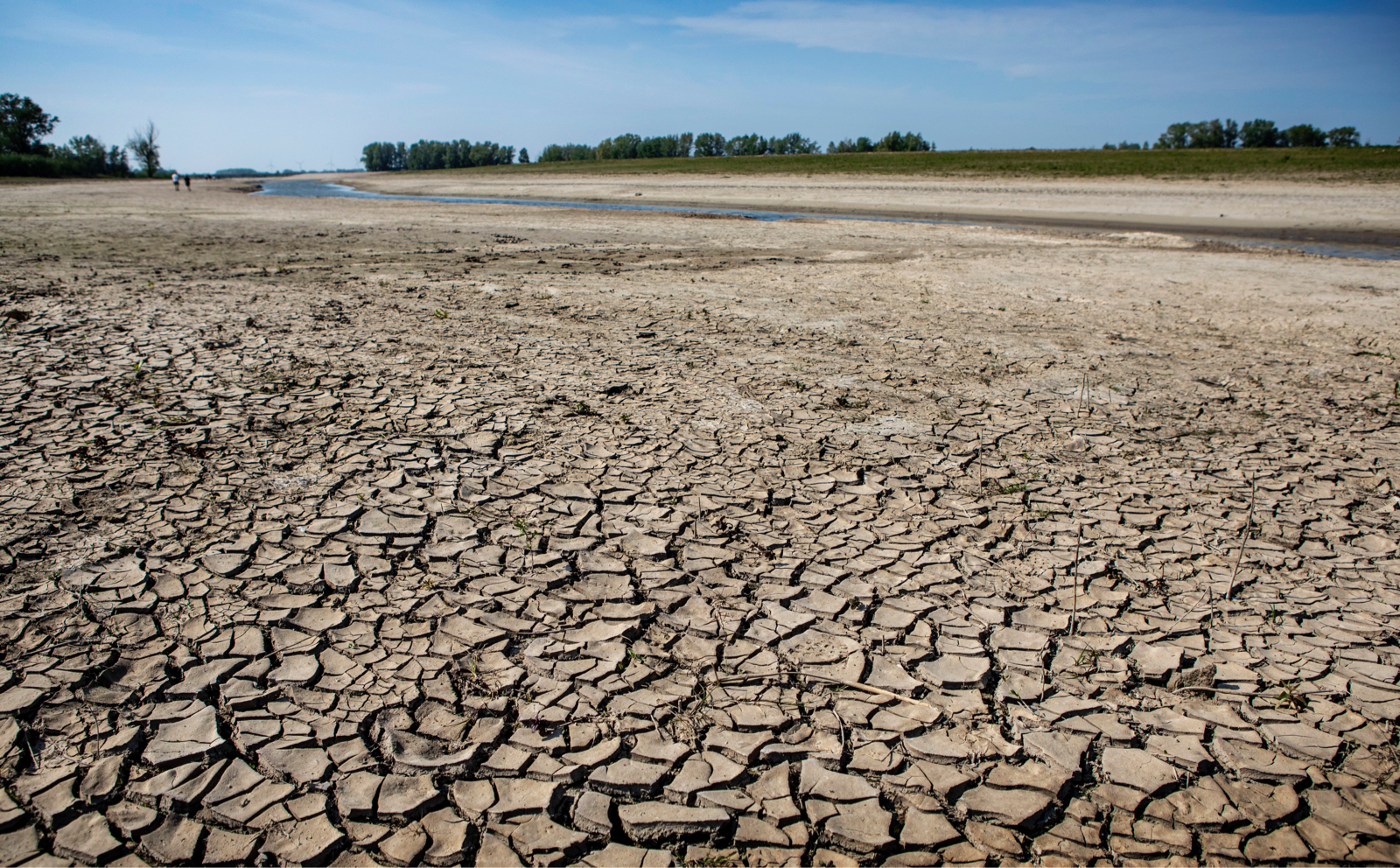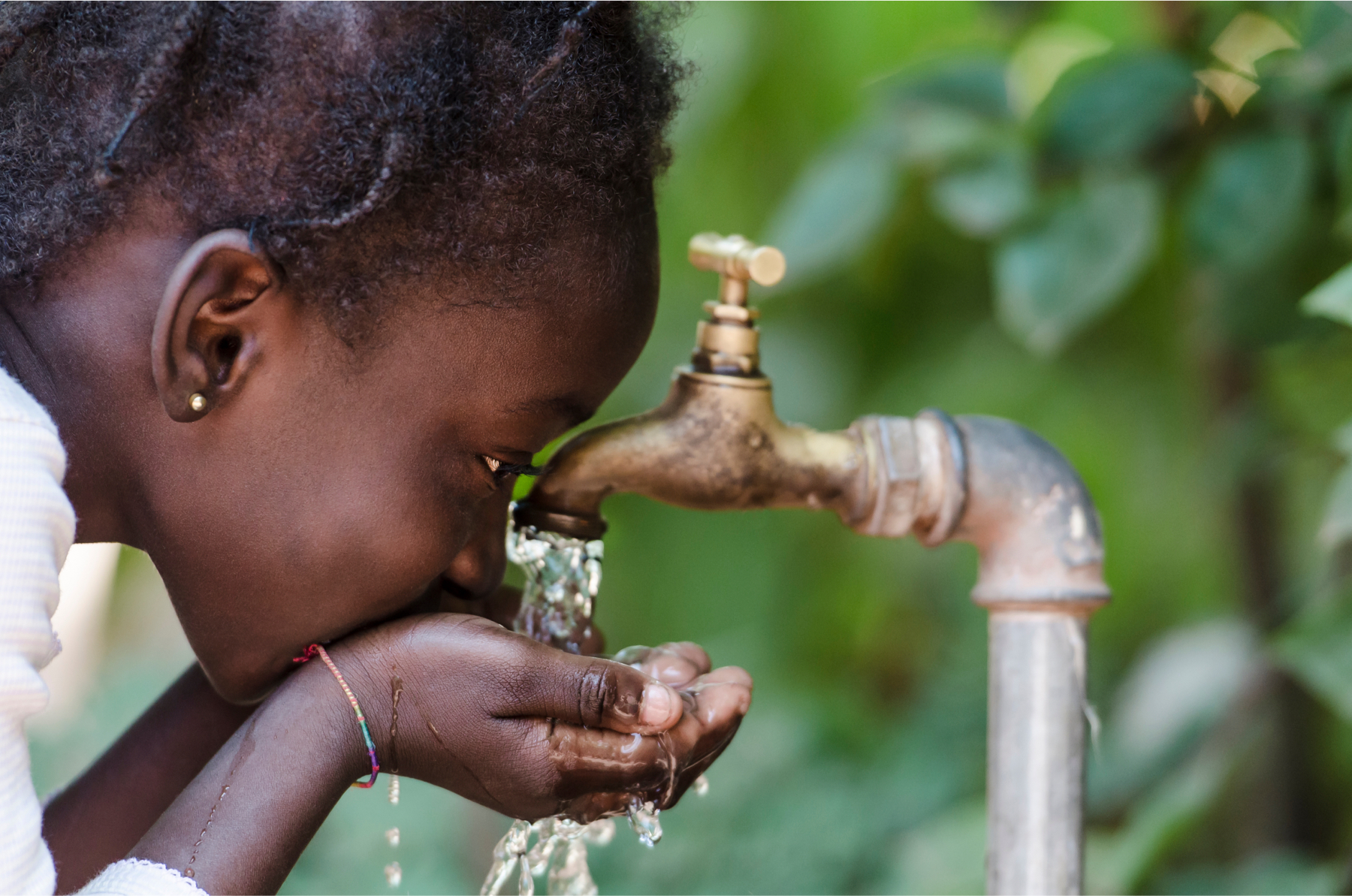Healthy water quality
Water pollution due to chemicals, excess nutrient loads, microplastics and pathogens forms a risk for human and ecosystem health. Worldwide, 2-3 million people die every year from water-related infectious diseases and chemicals in the soil. Various factors resulting from global climate change may lead to cascade effects. For instance, more extreme weather may lead to more sewage and nutrients entering surface water. And high nutrient loads make water more attractive for mosquitos as breeding site. At higher temperatures, more people will bathe in water and be exposed to pathogens. Monitoring and modelling the various pathways will support the development of targeted actions for better water quality management and a safer and healthier environment.
Understanding pathways to guide actions
Deltares promotes a systemic approach to assess the role of water quality in the pathway towards effects on human health based on the Driving forces – Pressures – State – Exposure – Effect – Actions (DPSEEA) framework. For water quality, it is important to have a picture not only of the pollution sources but also of how they are affected by major driving forces. Emissions from industry, cities and agriculture change the state of water – underground, in lakes and rivers, and in seas and oceans – as determined by chemical, microbiological and ecological aspects in combination. Deltares supports the health sector with systemic knowledge about the role of water in the pathways from environment to human health. This knowledge is used for specific initiatives such as the development of tools for monitoring and modelling emissions, water quality and aquatic ecology, but also for policy advice and recommendations for national safety plans or local adaptations in water and land management.
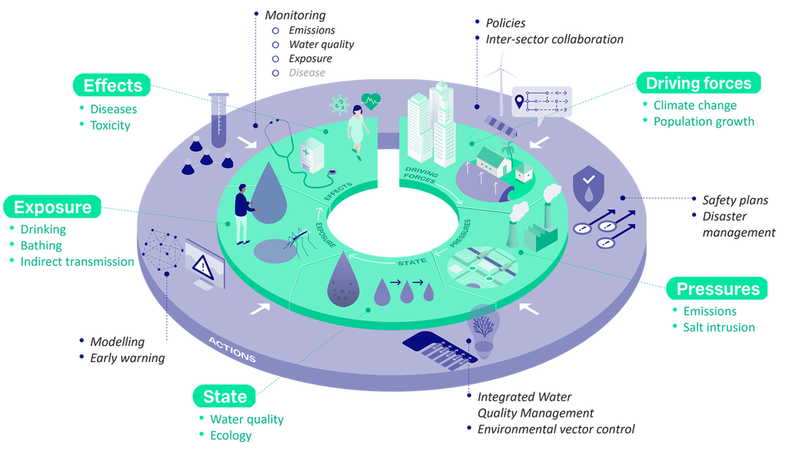
Infographic showing the pathways from Driving forces and Pressures to Effects on human health, with potential Actions to which Deltares contributes.
'The framework helped us conceptualise the broader context of climate change and water management. It supports a more encompassing approach to water supply, sanitation and hygiene for improved health. WHO will work with national governments and other partners to ensure that our focus areas will contribute to better climate resilience and improved health.'
Bruce Gordon, Unit Head, Water, Sanitation, Hygiene and Health (WASH), Department of Environment, Climate Change and Health, World Health Organization
Predicting and mitigating vector-borne diseases
Mosquitoes, which are known to transmit diseases such as malaria and dengue fever in the tropics, are increasingly bringing health risks to temperate regions in Europe and Northern America. In the Netherlands, for instance, land subsidence has led to salt intrusion and larger mosquito populations. Research by the One Health PACT consortium has shown that these insects, that may transmit West Nile virus, thrive in water that is rich in nutrients. They can also cope with much higher salt levels than their predators. These findings have prompted a new study by the Pandemic & Disaster Preparedness Centre. Future changes in land use, in combination with climate change, are likely to aggravate the risk of mosquito-borne diseases. We developed One Health scenarios using the Netherlands as an example of a delta country in order to determine which policy choices would make the country most vulnerable to the risk of disease outbreaks. New integrated methods for sampling birds and mosquitoes with a nationwide network of sites and mobilising many citizen scientists, served as an early warning system to detect the localised transmission of West Nile Fever and other mosquito-borne viruses in the Netherlands. Similarly, irrigation infrastructure in Malawi has proved to be an ideal breeding site for vector mosquitoes for malaria and snails for schistosomiasis (bilharzia). Environmental control measures will be tested to complement existing health interventions. A better understanding of the role of water and its ecological quality can therefore support the development of both preparedness and intervention measures.

Louie Krol, PhD student, conducting experiments with mosquitoes at the Living Lab at Leiden University for the One Health PACT project (Photo by Sam Boerlijst)
Early warnings for swimmers
The combination of climate change and pollution may drive the presence of algae, bacteria, viruses and other pathogens in locations such as urban canals and coastal water (BlueAdapt), and human exposure to these vectors. While we do not fully understand all the mechanisms and risks involved, we can start alerting bathers and water managers to the risks. Intense rainfall may lead to sewer overflows and sudden increases in faecal pathogens in bathing water. Models based on measurements and laboratory experiments, in combination with data on rainfall and temperature, can be used to forecast pollution events. With those forecasts, it is possible to warn bathers to keep out of the water.
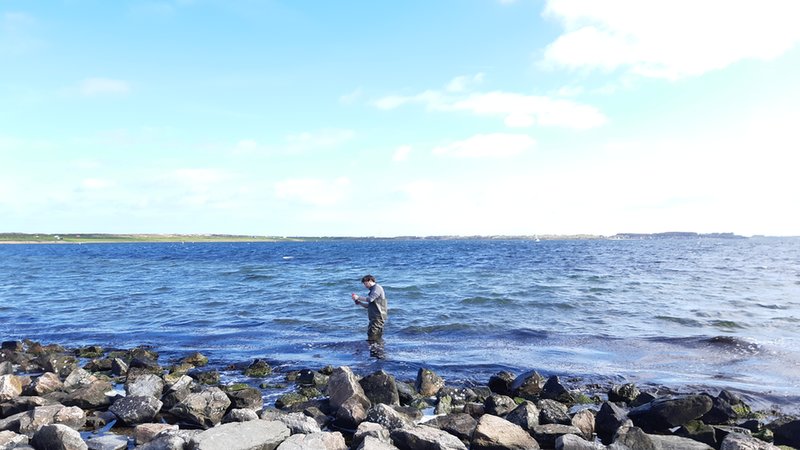
Franco Forlano Bo, PhD student, sampling bacteria at Lake Grevelingen for the BlueAdapt project (photo by Douwe Maat)
Additionally, the NKWK project provides an overview of the impact of climate change on urban water quality. The direct health impacts include the impairment of water quality for recreation, while demand for this type of water use is increasing. The results of the NKWK study on how climate change impacts water quality were discussed at the National Bathing Water Day 2023 in the Netherlands. Practitioners and researchers discussed possible measures to address the combination of poorer water quality and increasing demand for urban water recreation. One of the proposed measures is to identify new, more climate-resilient, designated bathing zones and to improve bather safety outside the officially designated bathing waters. Deltares research provides guidance for the assessment of the functional quality of urban waters with a framework that includes Suitability Indices for specific use functions. The index for recreation can be used to explore the potential for leisure activities in urban waters and it is used in the climate change stress test for water quality.
Nutrient load reduction measures and nutrient impacts under climate change
While nutrients are required for aquatic life, the large surplus of anthropogenic nutrients in our rivers, coastal zones and seas is causing severe problems. The situation is improving: phosphate loads in particular have declined in recent decades. However nitrogen is still a major problem. Tackling this complex issue requires understanding:
- nutrient sources, pathways and sinks;
- the impacts on ecosystem health in different ecosystems;
- governance frameworks at the right level in order to implement and monitor effective measures.
The central aim of the NAPSEA project is to help national and local authorities to select effective measures to reduce nutrient loads and to establish political support for their implementation. NAPSEA uses an integrated approach to address nutrient pollution from source to sea, combining three complementary perspectives: governance, nutrient pathways & measures, and ecosystem health. The geographical scope of the project covers the catchment of the Wadden Sea, with case studies for the Rhine, Elbe and Hunze catchments, and the Wadden Sea itself. NAPSEA showcases best practices for the implementation of socially acceptable, sustainable and effective measures for these case studies. The effects of climate change and co-benefits of measures for reducing greenhouse gas emissions are taken into account.
The North Sea is expected to see a major change, and increasing human use, over the next few decades. The energy transition will claim significant areas on the North Sea for offshore wind, and possibly offshore solar. The food transition will see a move away from fishing. Under EU guidelines, there are major national and international initiatives to restore lost biodiversity, ecosystem functions and keystone species. In addition to these direct, human-induced changes, climate change will also impact the ecological functioning of the system. The Deltares suite of data science, modelling and monitoring tools is instrumental in identifying and quantifying the complex interactive processes governing the impacts of human interventions and the ecosystem. These are essential to optimise the North Sea contribution to energy, food and safety, while preventing the transgression of the ecological ceiling (carrying capacity for ecological functions) of the North Sea. Nutrient levels in the North Sea are still excessive: although measures based on the Water Framework Directive have resulted in strong reductions in phosphate loads, nitrogen levels remain high. This has a major effect on species distribution, and also the capacity of the North Sea to sustain aquaculture. The FutureMARES project is establishing a picture of changes in discharges to the North Sea and the impact of climate change on nutrient availability and factors such as seaweed and mussel productivity.
Realising impact
With these activities and outcomes, Deltares and our partners are aiming to have a positive impact on several social and ecological values (also using the Doughnut Economics methodology). With our systemic approach, making new knowledge available and providing novel monitoring techniques, models and solutions, we help governments, water authorities, the health sector and other stakeholders to reduce water-related health risks through reduced pollution and restored aquatic ecosystems.
External references
Momentum: Microplastics and Human Health Consortium
REST-COAST: Large scale RESToration of COASTal ecosystems through rivers to sea connectivity
OBAMA-NEXT: OBserving And mapping MArine ecosystems – next generation tools
JERICO-S3: Joint European Research Infrastructure of Coastal Observatories: Science, Service, Sustainability
E-shape: Shaping the EuroGEO initiative and delivering EO-derived benefits with and for users
All Sendai priority’s
Sustainable development goals
Good health and well-being





